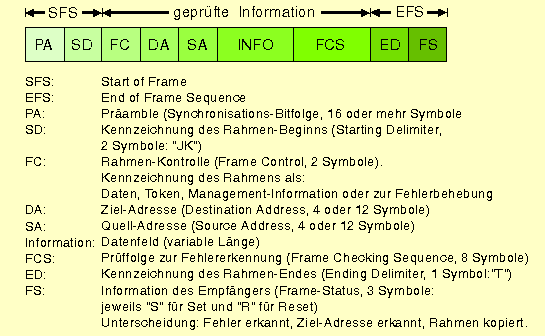FDDI access control
The access procedure for FDDI essentially corresponds to the token ring protocol according to IEEE 802.5. A fundamental difference arises in the way a free token is generated by the transmitting station after a transmission has been completed. Within FDDI, a station sends the free token immediately after sending the last data packet within the maximum transmission time on the ring. The maximum data packet length that can be transmitted is 4495 bytes for FDDI.
Two counters in each station, the Token Rotation Timer and the Token Holding Timer, ensure a correct sequence. The Token Rotation Time (TRT), measured by each station as the time between two free token arrivals, is a measure of the current network load. Token Holding Time( THT) is the maximum dwell time of a token within a station. After this time, the token must be passed on to the following station. If no station transmits, the token circles unused in the ring. If a station wants to send, it waits for the arrival of the token and immediately starts to send its own data instead of the token.
The performance of an FDDI ring is significantly influenced by the token holding time. The value for this time is at least 4 ms per station for FDDI. For example, if there are 30 stations in the ring, the maximum time a station has to wait before transmitting is 120 ms. This delay excludes real-time applications as well as multimedia applications.

